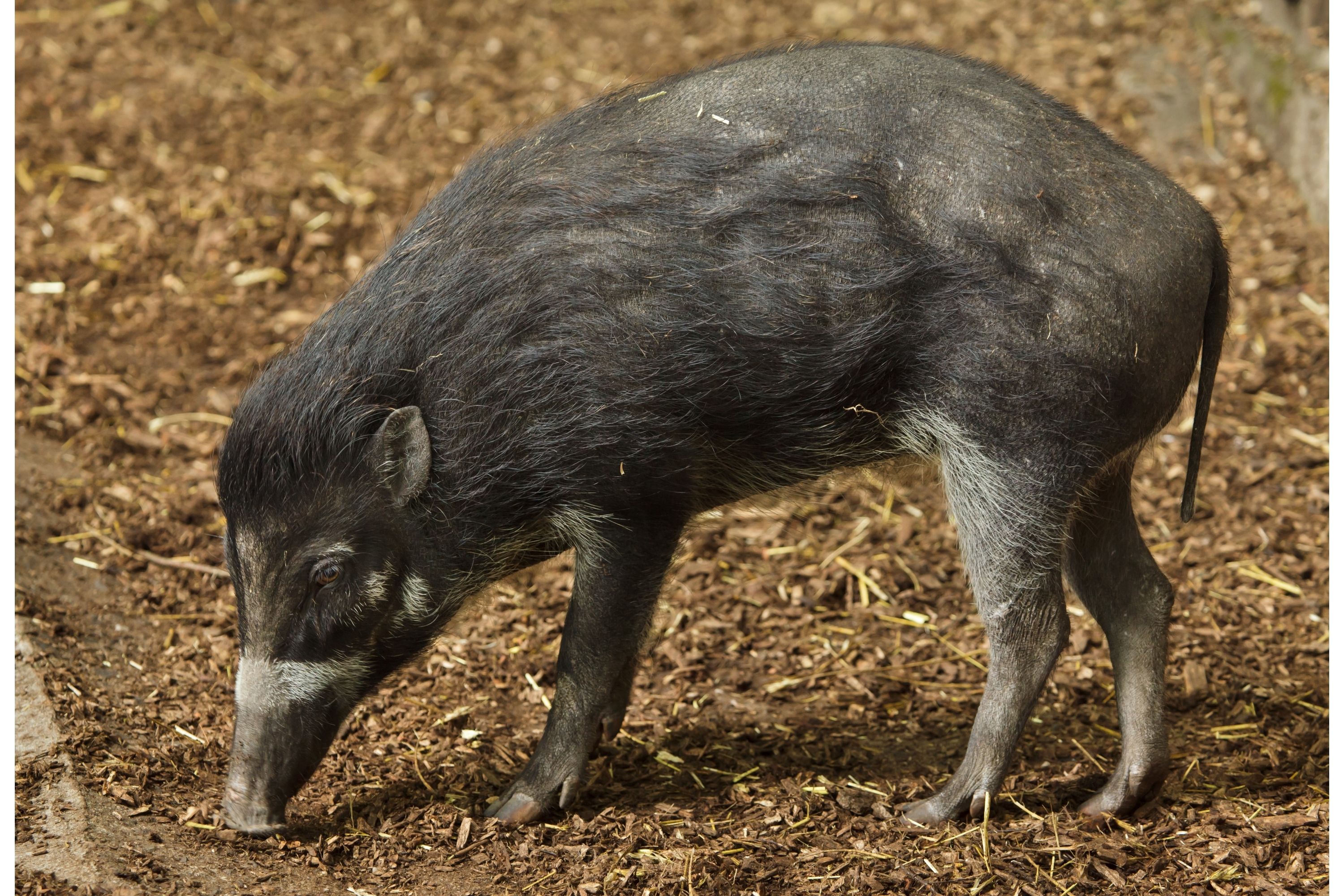Visayan warty pig
(Sus cebifrons)

Description
The Visayan warty pig (Sus cebifrons) is a critically endangered species in the pig genus (Sus). It is endemic to six of the Visayan Islands (Cebu, Negros, Panay, Masbate, Guimaras, and Siquijor) in the central Philippines. It is known by many names in the region (depending on the island and linguistic group) with most translating into 'wild pig': baboy ihalas ('wild pig' in Hiligaynon,Cebuano and Waray), baboy talonon ('forest pig' in Hiligaynon), baboy sulop ('dark pig' in Cebuano), and baboy ramo ('wild boar' in Waray). The Visayan warty pig is critically endangered due to habitat loss and hunting. It is believed to be extinct in four of the islands in its original native range, with only small surviving populations in Negros and Panay. Due to the small numbers of remaining Visayan warty pigs in the wild, little is known of their behaviors or characteristics outside of captivity. In 2012 the Negros Interior Biodiversity Expedition undertook camera trapping in the Northern Negros Natural Park and gained the first photos taken in the wild of the Visayan warty pig. The Visayan warty pig is endemic to six islands in the Philippines: Cebu, Negros, Panay, Masbate, Guimaras, and Siquijor. However, only Negros and Panay have documented remaining populations of Visayan warty pigs. It is believed to be extinct in all the other islands, although there is a possibility of some surviving populations in Masbate The Visayan warty pig receives its name from the three pairs of fleshy "warts" present on the visage of the boar. Biologists speculate that the reason for the warts is to assist as a natural defense against the tusks of rival pigs during a fight. The boars also grow stiff spiky hair. Visayan warty pigs tend to live in groups of four to six. The diet of the pig mainly consists of roots, tubers, and fruits that can be found in the forest. They may also eat cultivated crops. Since approximately 95% of their natural habitat has been cleared by local farmers who cut down the forest to plant crops, the propensity of the pigs to eat cultivated crops has risen dramatically. Because the land that is cleared for farming is often unproductive after a few years, the food sources of the Visayan warty pig are extremely limited, a factor that has contributed significantly to the pig's dwindling numbers. Visayan warty pigs were the first pig species ever to be recorded using tools for digging at a French zoo.
Taxonomic tree:







